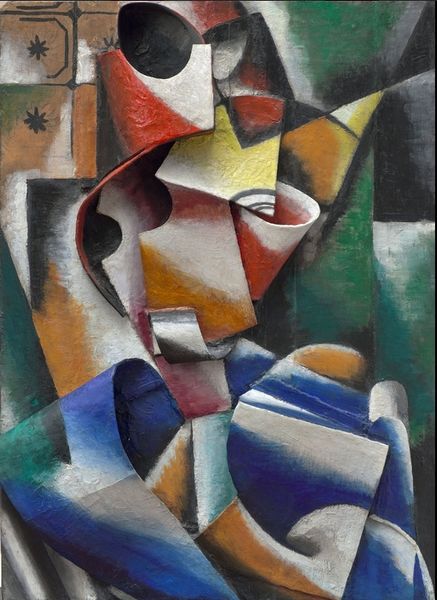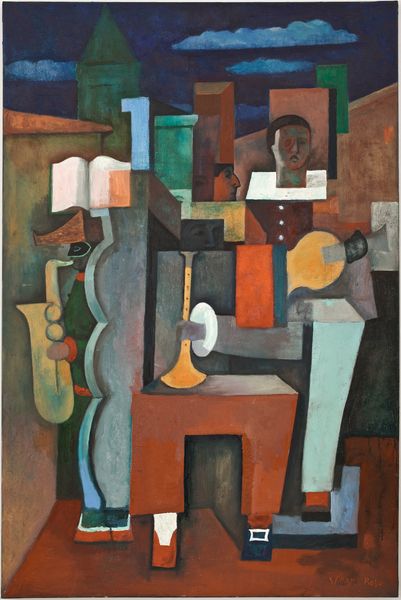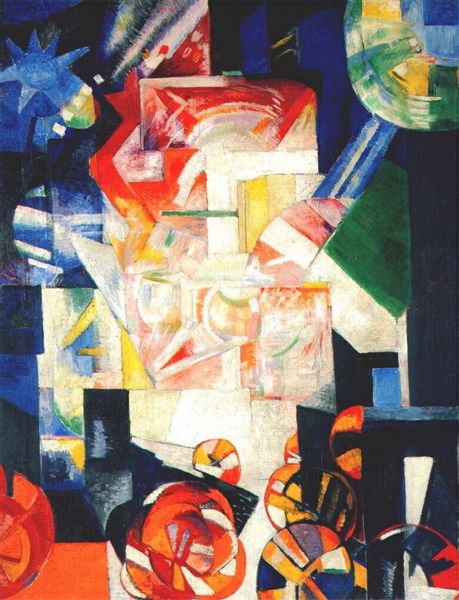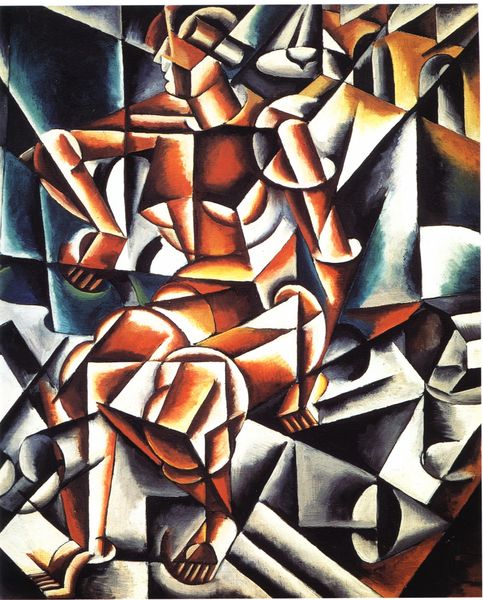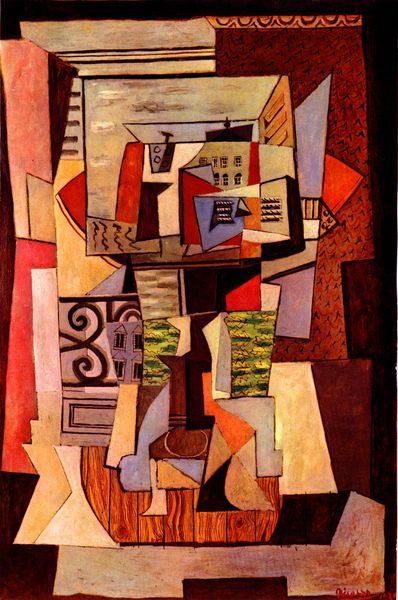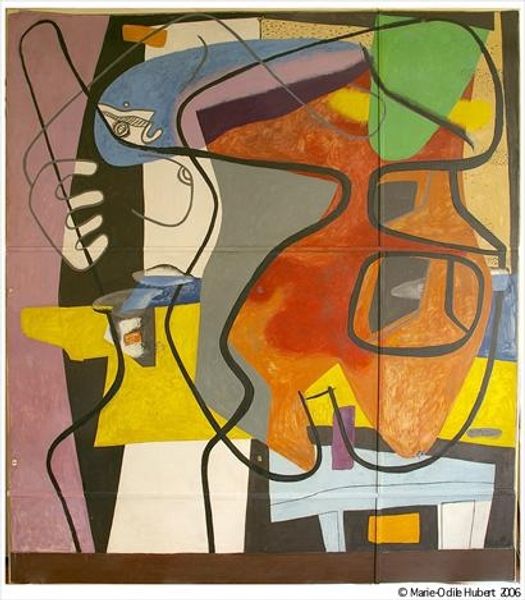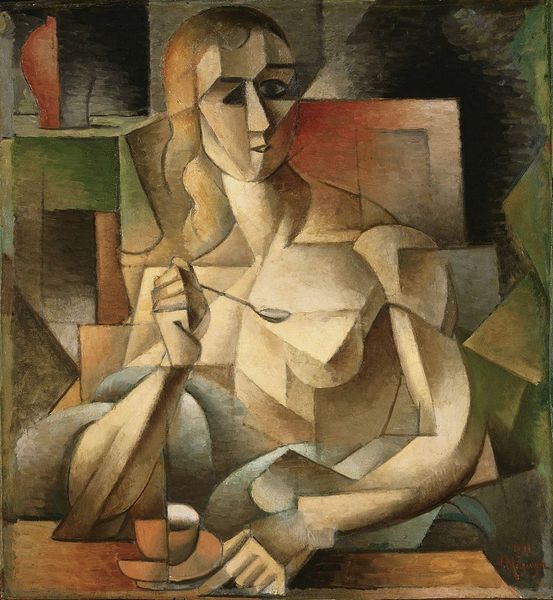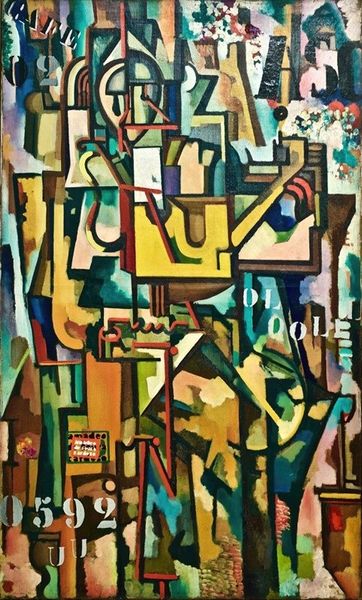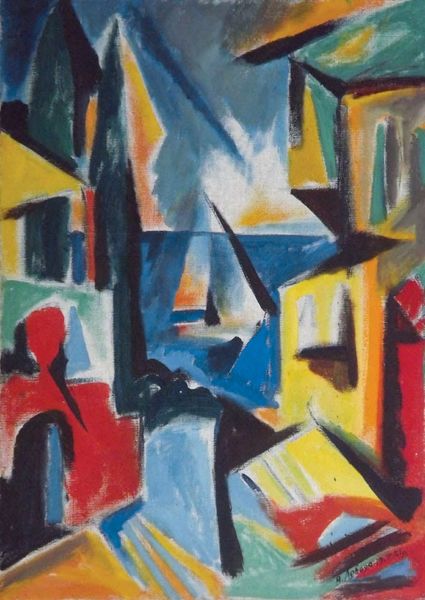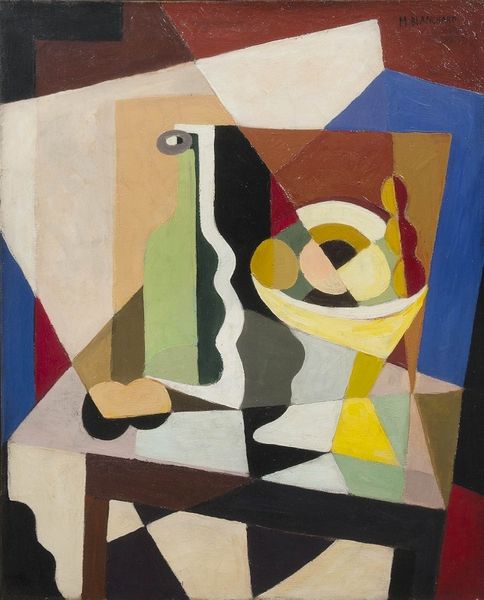
painting
#
portrait
#
cubism
#
abstract painting
#
painting
#
geometric-abstraction
#
portrait art
#
modernism
Copyright: Public domain
Editor: Here we have Amadeo de Souza-Cardoso’s "Untitled (Portrait of Paul Alexander)," painted in 1917. It's an oil painting, very vibrant, but there's also this rigid structure from the cubist influence. It feels both intimate and distant. What do you see in this portrait? Curator: Well, given the era – 1917 – this artwork is steeped in socio-political context. Europe was in the throes of World War I, a period of immense social upheaval and re-evaluation of identity. The fractured cubist style speaks to a world no longer viewed as whole or stable. Notice the sitter, Paul Alexander, is fragmented yet still recognizable, perhaps symbolizing the tension between individuality and societal breakdown during wartime. Does the fractured representation resonate with you in terms of portraying inner turmoil or perhaps a shifting social landscape? Editor: That's a compelling reading! I was focused on the stylistic elements, but framing it against the backdrop of WWI and its impact on individual identity makes a lot of sense. The portrait seems less about capturing a likeness and more about capturing a feeling, almost. Curator: Precisely. And let's consider Souza-Cardoso himself. He was a Portuguese artist working within the European avant-garde. How might his position as someone slightly outside the dominant artistic circles of Paris, yet deeply engaged with them, inform his perspective? Could this be seen as a visual dialogue about belonging and displacement, mirroring broader concerns of identity formation in a rapidly changing world? Editor: I never considered that aspect of displacement. That's fascinating, the way it reflects larger societal concerns, and it’s a good reminder to look at both the subject of a piece and the artist. I’ll definitely carry that forward. Curator: And I'm reminded of how powerful cubism became during wartime. It became less about a pretty picture and more about visual communication. The artists broke it so we, as an audience, had to reflect upon those breaks to understand the narrative they were communicating. What a great artwork, all things considered.
Comments
No comments
Be the first to comment and join the conversation on the ultimate creative platform.
